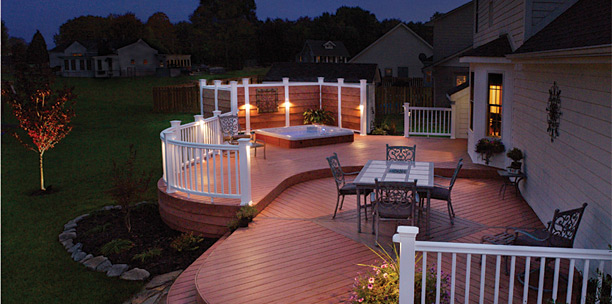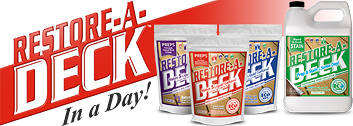
Updated for 2025 – Best Deck Stains
Restore-A-Deck Wood Stain: A Top Performer
One of the newer, more impressive stains on the market right now is the Restore-A-Deck Wood Stain. It’s a water-based, synthetic resin, semi-transparent stain made with high-quality resins that bond firmly to the wood. A key advantage of this stain is its same-day application—you can apply it right after prepping your deck, saving both time and effort. While it may cost more than budget options, its long-term durability makes it a worthwhile investment.
Understanding Deck Stains: Best vs. Worst Options
Deck stains generally fall into two categories:
- Water-Based Deck Sealers
- Oil-Based Deck Sealers
Each type has significant differences, and understanding them can help you choose the best stain for your deck.
Oil-Based vs. Water-Based Deck Stains
Pros and Cons of Oil-Based Stains
Traditionally, oil-based deck stains have been the go-to choice due to their excellent penetration into wood and rich appearance. However, they have several downsides:
- Mold and Algae Growth: Natural resins in oil-based stains serve as food for mold and algae, leading to unsightly black patches on your deck.
- Toxic Additives: To combat mold, manufacturers add strong mildewcides and algaecides, which can leach out over time, posing a risk to children and pets.
- Environmental Concerns: Due to their harmful effects, oil-based stains are being phased out by the EPA. The following states have already banned most oil-based stains:
- California, Connecticut, Delaware, Illinois, Washington D.C., Maine, Massachusetts, New Hampshire, New Jersey, New York, Ohio, Pennsylvania, Rhode Island, Vermont, and Virginia.
- Difficult Cleanup: These stains require mineral spirits for cleanup and take longer to dry compared to water-based alternatives.
Why Water-Based Stains Are Superior
Water-based stains have improved significantly in recent years, making them the best alternative to oil-based products. A standout option is Defy Extreme Wood Stain, which uses advanced technology to penetrate wood deeply while resisting mold and algae growth. Key benefits include:
- Synthetic Resins: Unlike oil-based stains, synthetic resins are not a food source for mold and mildew.
- Low Toxicity: No need for harsh mildewcides or algaecides, making them safer for families and the environment.
- Easy Cleanup: Simple soap and water cleanup.
- Faster Drying Time: Less downtime between application and use.
Choosing the Right Deck Stain: Clear, Semi-Transparent, or Solid Color?
Deck stains come in three primary finishes:
1. Clear Deck Stains
- Offer minimal UV protection, leading to quicker fading and graying.
- Most clear stains have an amber tint to extend lifespan.
- Typically last only a few months before reapplication is needed.
2. Solid Color Deck Stains
- Best for vertical surfaces like railings or posts.
- Not ideal for horizontal deck boards due to heavy wear.
- Tend to peel over time, requiring difficult removal and stripping before reapplication.
3. Semi-Transparent Deck Stains (Best Overall)
- Offer UV protection while allowing the wood grain to show through.
- Long-lasting, with some lasting several years before needing maintenance.
- Easy to maintain—typically requires a light cleaning and reapplication without stripping.
Final Recommendations
When selecting the best deck stain, keep these key takeaways in mind: ? Opt for water-based stains—they’re easier to clean, environmentally friendly, and longer-lasting. ? Choose synthetic resin stains—they resist mold and require fewer toxic chemicals. ? Go for semi-transparent stains—they provide the best balance of protection, durability, and aesthetic appeal.
While cheaper deck stains may seem tempting, they often contain low-quality resins and fillers that won’t last. Investing in a high-quality deck stain ensures better protection, longer durability, and a more beautiful deck over time.


204 comments
Have a 30year old redwood deck, mountains in California, mild climate. Will totally rebuild in 5 years but I want to protect it until then. We can remove existing paint, scraping and pressure wash. Appearance is secondary to protection. Located in a rural area, not a low VOC area. Many thanks.
./Users/ken/Desktop/IMG_0221.HEIC
TWP Stain.
I have a large covered deck made of PTP and pine tongue and groove ceiling. The deck opens to the o doors with French doors. The interior room has heart pine floors that were sealed with a natural finish and are aging beautifully. What stain would you recommend for the deck/ceiling ?
TWP Stain.